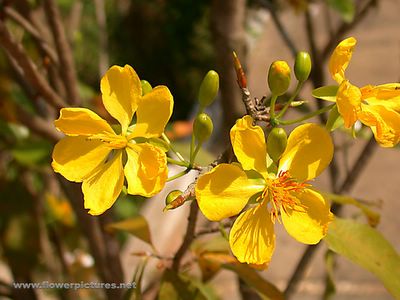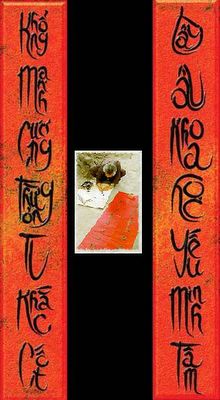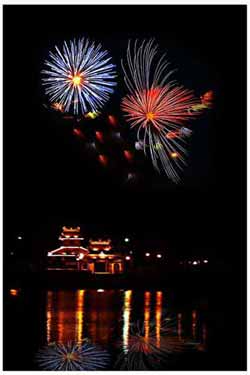Tet Nguyen Dan (The Lunar New Year)

Tet has become so familiar, so sacred to the Vietnamese that when Spring arrives, the Vietnamese, wherever they may be, are all thrilled and excited with the advent of Tet, and they feel an immense nostalgia, wishing to come back to their homeland for a family reunion and a taste of the particular flavours of the Vietnamese festivities.
Tet starts on the first day of the first lunar month and is the first season of the new year (according to the lunar calendar), and therefore it is also known as the Tet Nguyen Dan, literally meaning Fete of the First Day, or the Tet Tam Nguyen, literally meaning Fete of the Three Firsts.
The Vietnamese, wherever they may be, are all thrilled and excited with the advent of Tet, and they feel an immense nostalgia, wishing to come back to their homeland for a family reunion and a taste of the particular flavours of the Vietnamese festivities. Those who have settled down abroad all turn their thoughts to their home country and try to celebrate the festivities in the same traditional way as their family members and relatives to relieve their nostalgia, never forgetting the fine custom handed down from generation to generation.
The Tet of the New Year is, above all, a fete of the family. This is an opportunity for the household genies to meet, those who have helped during the year, namely the Craft Creator, the Land Genie and the Kitchen God. As the legend goes, each year on December 23 of the lunar calendar, the Kitchen God takes a ride on a carp to the Heavenly Palace to make a report on the affairs of the household on earth and then returns on December 30 to welcome the New Spring.
Tet is also an opportunity to welcome deceased ancestors back for a family reunion with their descendants. Finally, Tet is a good opportunity for family members to meet. This custom has become sacred and secular and, therefore, no matter where they are or whatever the circumstances, family members find ways to come back to meet their loved ones
Vietnamese Tet has quite a few original practices with customs and entertainment that have distinct Vietnamese cultural characteristics. In the framework of this article, a few customs and practices are presented so that readers can better understand the traditional Tet of Vietnam.








